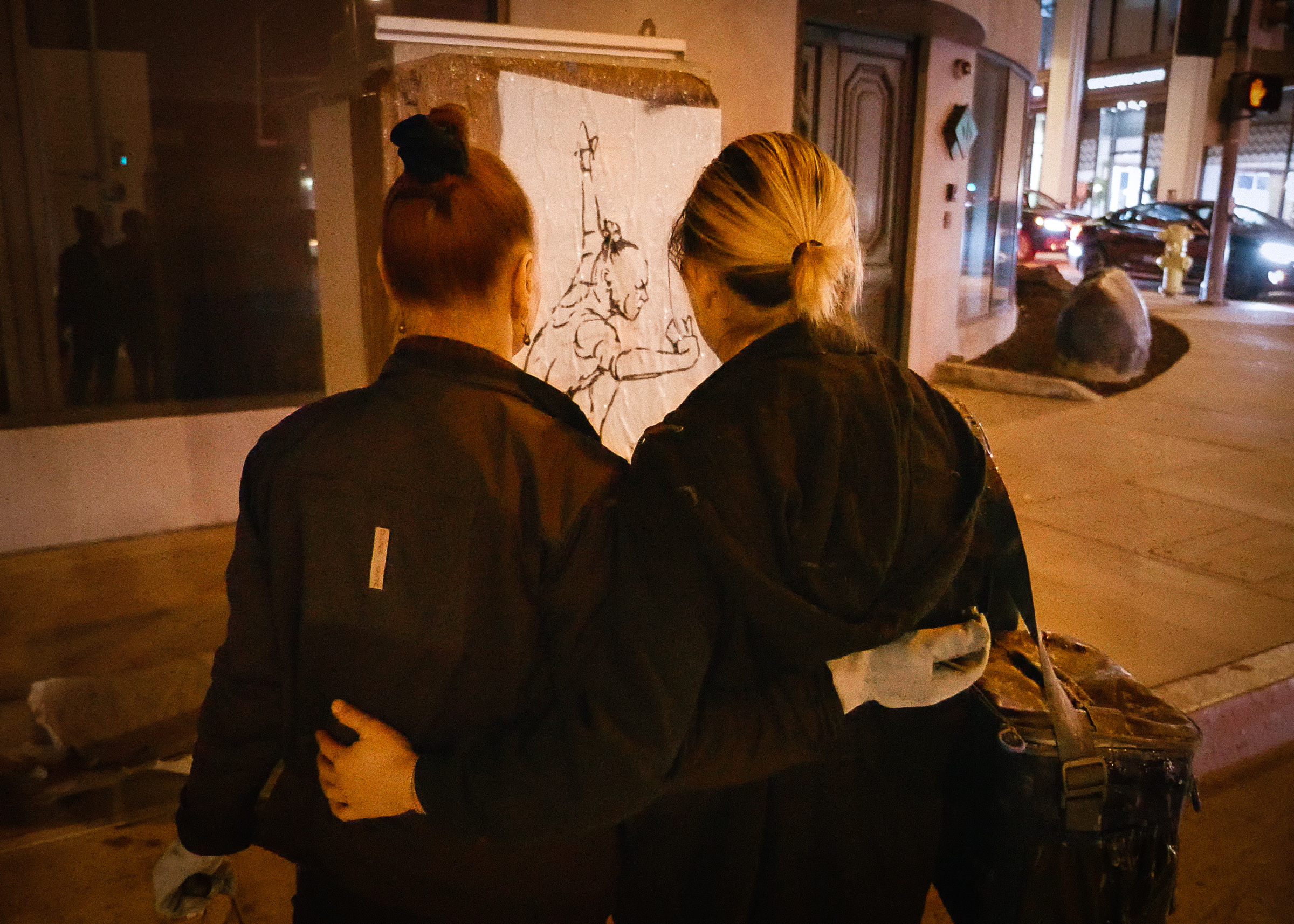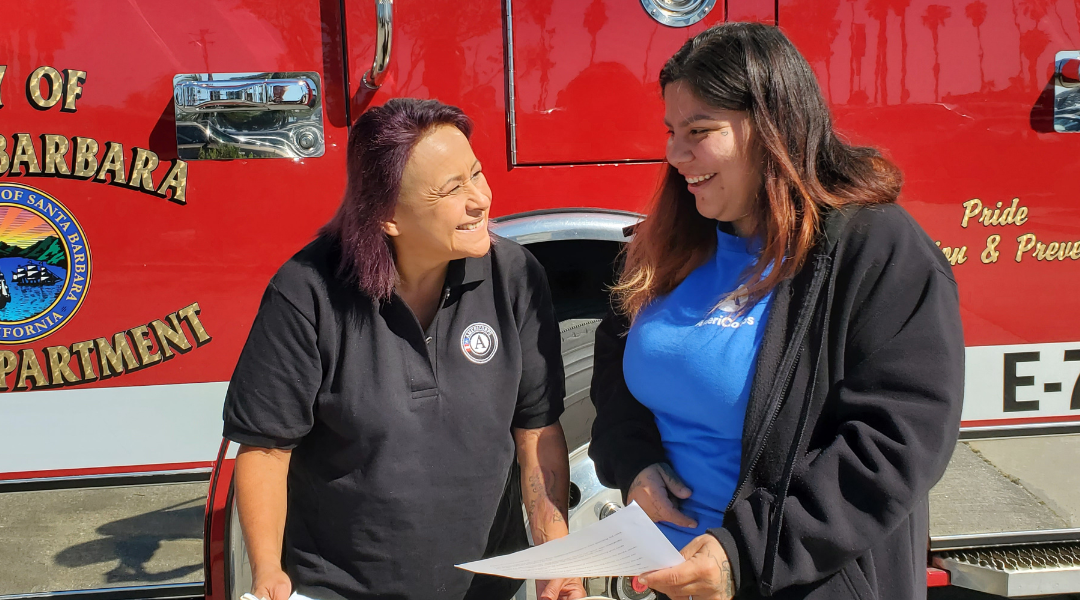
Linda and Inksap lay on the ground with their street art surrounding them, courtesy of Stuart Paul.
A new documentary film, Ink & Linda, chronicles the unexpected friendship between Inksap, a Vietnamese-American street artist in his 20s, and Linda, a white modern dance teacher in her 70s. Shortly after a chance encounter brings these two together, they begin collaborating on a new series of paintings and exploring the streets of Los Angeles together after dark.
 The film explores the beauty that exists when we cross boundaries between generations and cultures, and find family where we least expect it. I spoke with the filmmaker, Stuart Paul (left), about the inspiration behind Ink & Linda, the impact he hopes it will have, and how the general public can watch it.
The film explores the beauty that exists when we cross boundaries between generations and cultures, and find family where we least expect it. I spoke with the filmmaker, Stuart Paul (left), about the inspiration behind Ink & Linda, the impact he hopes it will have, and how the general public can watch it.
Where did the idea for this story come from?
I was one of Linda’s dance students. I got to her studio on La Cienega one day, and she was bereft because a drunk driver had crashed into her building and she wasn’t sure if her business could survive. A few days later, she led me down the alley and showed me the street art she found on her exterior wall.
It was of a Vietnamese mother carrying two children in a basket, looking over her shoulder as if she was fleeing and all three of them were wearing gas masks. Seeing this sketch of a woman leaving home and looking for safe haven really moved Linda because she was upset about the state of the world and the immigration crisis in America.
Little by little, I would hear updates — that Linda tracked down the artist, that they met and spent five hours together, that they were going to do street art together. I was like, this is a story that has to be told!
When did you first meet Ink?
I sent Linda an email suggesting we do a documentary and she immediately said yes, but wanted to discuss it with Inksap. He was really flattered and into the idea right from the start. He loves creating art for art’s sake, but he was also aware it could be good for him professionally. Energetically, it was just a match.
How would you describe the relationship between Ink and Linda?
I saw a very motherly relationship yet at the same time, they were friends and collaborators and equals. She was his student since she was new to creating street art. But she was also a mentor and became almost like an artistic mother to him, giving him support when he didn’t feel like he could be honest about who he was and his relationship with his own family.

Inksap and Linda, courtesy of Stuart Paul.
Were you already interested in intergenerational work?
No. I’m a screenwriter and I have a pretty keen eye for conflict and contrast and dynamic relationships. Ink and Linda’s differences were really interesting to me. After making the film, the power of intergenerational connection became apparent, but it wasn’t on my mind at the beginning.
Who has seen the film so far?
The first people to see it were connected to Linda and Inksap, so a broad spectrum of young artists and middle-aged people from all walks of life and all races and economic levels and older people.
It seems to be resonating universally. When we premiered the film at the Helms Gallery, we had five nights where we showed the film. There was a dance performance by Linda and Inksap, where as she moved Inksap painted her, and other artwork by Inksap was also on display. The feeling of connectedness that came from the audience was pretty overwhelming.
We just finished our film festival run and won several awards. The film will begin airing on PBS September 10. That’ll be the first time the general public can watch it and you can find all the airdates on our website. If you’re interested in a private screening, you can learn more and contact me here.
What do you want the film to convey?
The feeling that there is more that connects us than divides us. The realization of how much we can learn from people that we don’t ever interact with and think are outside of our spheres. That feeling when you cross a boundary that has been put here by society, in terms of age, gender and cultural background. I want people who see the film to be more open to the possibility of love and education and peace through bridging these differences.
Why did you reach out to CoGenerate?
I like that you’re focused on trying to make the world a better place and solve problems by bringing the younger and older generations together. That really spoke to what I see in the film, where Ink and Linda are working together to create art, inspire people and initiate dialogue.
Talk to me about the illegality of street art.
I consider street art to be a form of conscientious objection. It’s an antidote to money being the cost of entry to art.
The very first piece of street art was a caveman putting his or her hand on the wall and plowing ocher powder onto it. It was an expression of identity and creativity utilizing the world as its canvas. By demonizing street art, I think we lose something that connects us to the human spirit. I believe the world should have more art in it, not less.
Stuart C. Paul is a screenwriter and filmmaker based in Los Angeles. A graduate of the University of Southern California School of Cinema-Television, Ink & Linda is his first documentary feature.






 The film explores the beauty that exists when we cross boundaries between generations and cultures, and find family where we least expect it. I spoke with the filmmaker, Stuart Paul (left), about the inspiration behind Ink & Linda, the impact he hopes it will have, and how the general public can watch it.
The film explores the beauty that exists when we cross boundaries between generations and cultures, and find family where we least expect it. I spoke with the filmmaker, Stuart Paul (left), about the inspiration behind Ink & Linda, the impact he hopes it will have, and how the general public can watch it. 